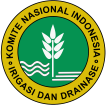Online Submissions
Already have a Username/Password for JURNAL SUMBER DAYA AIR?
Go to Login
Need a Username/Password?
Go to Registration
Registration and login are required to submit items online and to check the status of current submissions.
Author Guidelines
ARTICLE WRITING GUIDELINES FOR AUTHORS
- The editors accept manuscripts (scientific works on Water Resources Science and Technology), from within and outside the Directorate of Water Resources Engineering. The manuscripts are checked by expert editors.
- Manuscripts can be in the form of research results, or studies that have not and will not be published in other print media.
- For registration, authors can register through the website: https://jurnalsda.pusair-pu.go.id/index.php/JSDA/user/register . The Manuscript should be prepared according to the following author guidelines and Template. The manuscript template can be downloaded here.
- Manuscripts are written in Indonesian or English. Submitted in the form of electronic files using MS Office Word software accompanied by two printed copies. The minimum number of articles is 10, 12, 14, and 16 pages, including abstracts, figures, tables and bibliographies. The editor reserves the right to re-edit if more than 16 pages, if deemed necessary to consult with the author.
- Title (It is an effective and interesting sentence consisting of 9-15 words, not a method or activity name), written in Indonesian and English.
- The author's name, institution name and electronic address are written in full without title accompanied by information on the institution's address and city. If there is more than one author, the names are written in one line. Each author is given a sequential number (super script).
- The abstract must contain a brief statement of what and why the research was carried out, how and what research methods were carried out, the necessary analysis and what was found, general conclusions and specific conclusions of the discussion results, what lessons were obtained from the research results. Abstracts are written in Indonesian and English in accordance with correct rules, contain 200 - 250 words, written in one paragraph, avoid the use of abbreviations, and under the abstract are listed 5 keywords.
- The introduction contains at least: Background containing scientific reasons and actual phenomena that are important to study; Introduction to the profile of the study/research area along with an explanation of the reasons for its selection; What actual problems need solutions; Objectives and benefits of research; Location; Literature Review.
- Methodology contains at least: general research methods; research methods to answer hypothesis objectives and targets (if any); primary data collection or sampling methods, measurement methods and statistical testing (if any); methods including probabilistic hypothesis testing (statistical tests) and / or deterministic (mathematical) if any.
- Results and Discussion should at least contain: the results of the analysis of phenomena in the research area that are relevant to the central theme of the study, and the goals and objectives of the study; a brief discussion of the results of the analysis, verification and/or validation; interpreting the findings and linking the research findings to the established knowledge structure.
- Conclusions must contain: answers to hypotheses related to the title; discussion of the results of the analysis that refers to the objectives of the research/writing/paper; general conclusions as a result of generalization or linkage of similar phenomena in other areas from previous publications; problem-objective-results and discussion-conclusion must be consistent as a check and re-check effort; presented in narrative form.
- Acknowledgments
- References must avoid indications of plagiarism; only references that appear in the manuscript are included in the bibliography or vice versa; references referred to are in the form of primary sources (journals, theses, theses, dissertations) as much as 80% of the last 10 (ten) years; except for the latest revision of the handbook; should not cite his own writing too often (self citation); arranged alphabetically and not using numbers; for research results at least 10 references, while the results of the study at least 25 references; using reference applications such as Mendeley with the APA Styles system.
Copyright Notice
Authors who publish in Jurnal Sumber Daya Air agree to the following terms:
- Authors retain copyright and grant the journal right of first publication with the work simultaneously licensed under a Attribution-ShareAlike 4.0 International (CC BY-SA 4.0) License that allows others to share the work with an acknowledgment of the work's authorship and initial publication in this journal.
- Authors are able to enter into separate, additional contractual arrangements for the non-exclusive distribution of the journal's published version of the work (e.g., post it to an institutional repository or publish it in a book), with an acknowledgment of its initial publication in this journal.
- Authors are permitted and encouraged to post their work online (e.g., in institutional repositories or on their website) prior to and during the submission process, as it can lead to productive exchanges, as well as earlier and greater citation of published work (See The Effect of Open Access).
Privacy Statement
The names and email addresses entered in this journal site will be used exclusively for the stated purposes of this journal and will not be made available for any other purpose or to any other party.
Author Fees
This journal charges the following author fees.
Article Submission: 0.00 (IDR)
Authors are not required to pay an Article Submission Fee as part of the submission process to contribute to review costs.
Article Publication: 0.00 (IDR)
If this paper is accepted for publication, you will not to be asked to pay an Article Publication Fee to cover publications costs.
There is no waiver policy















